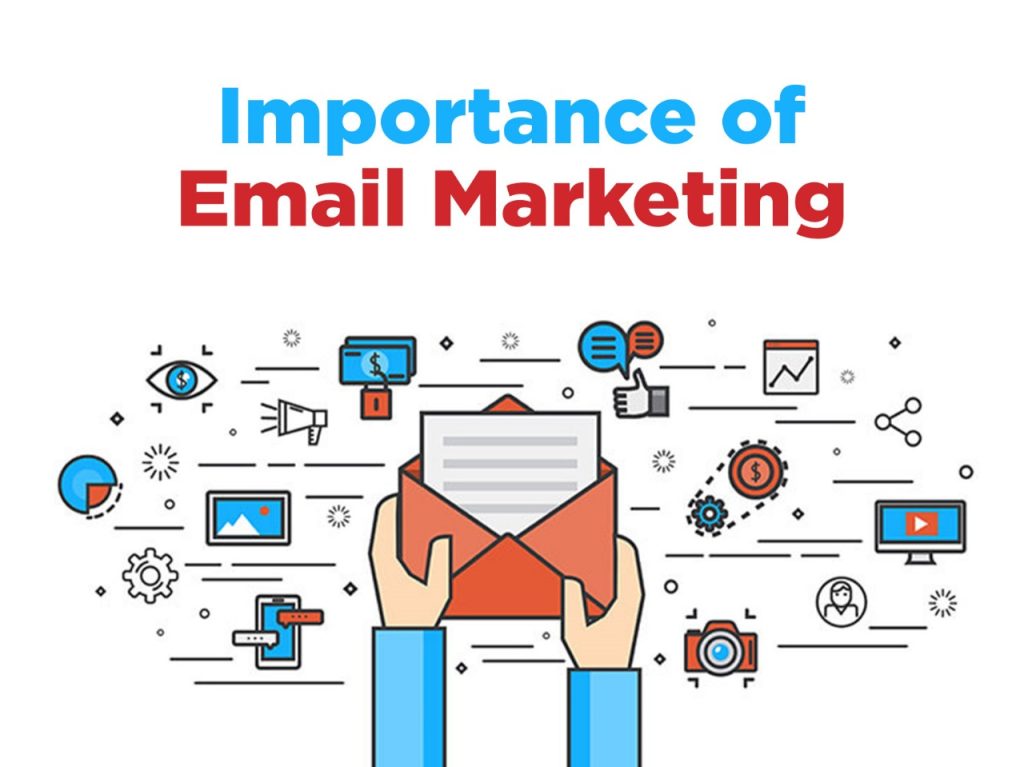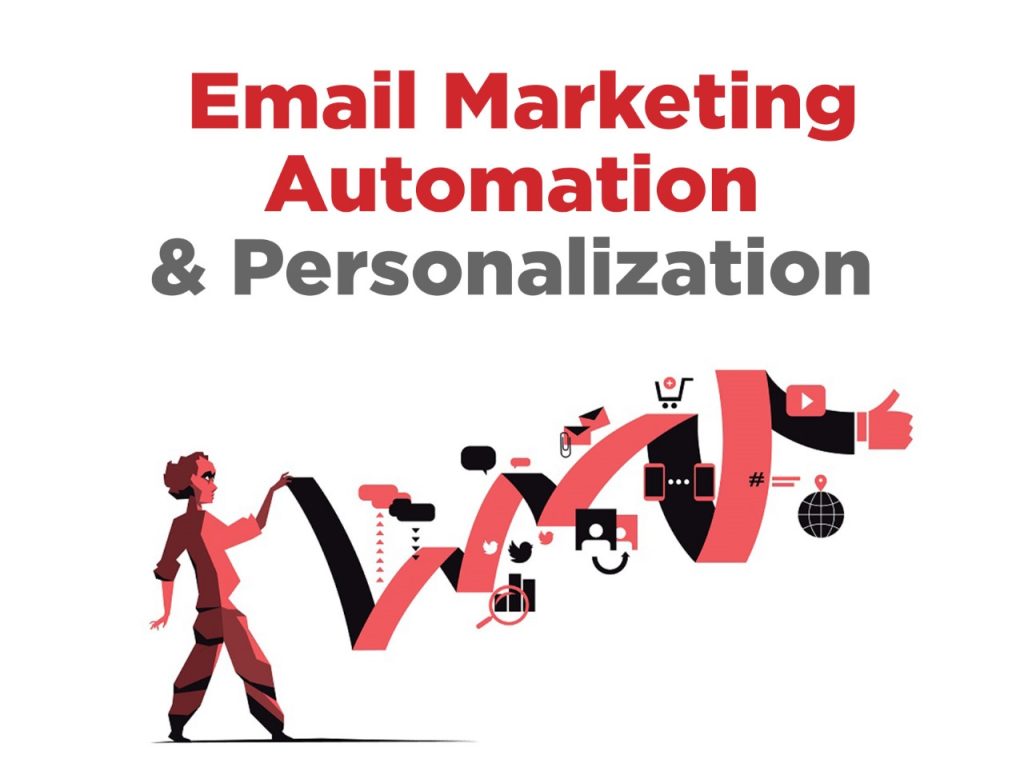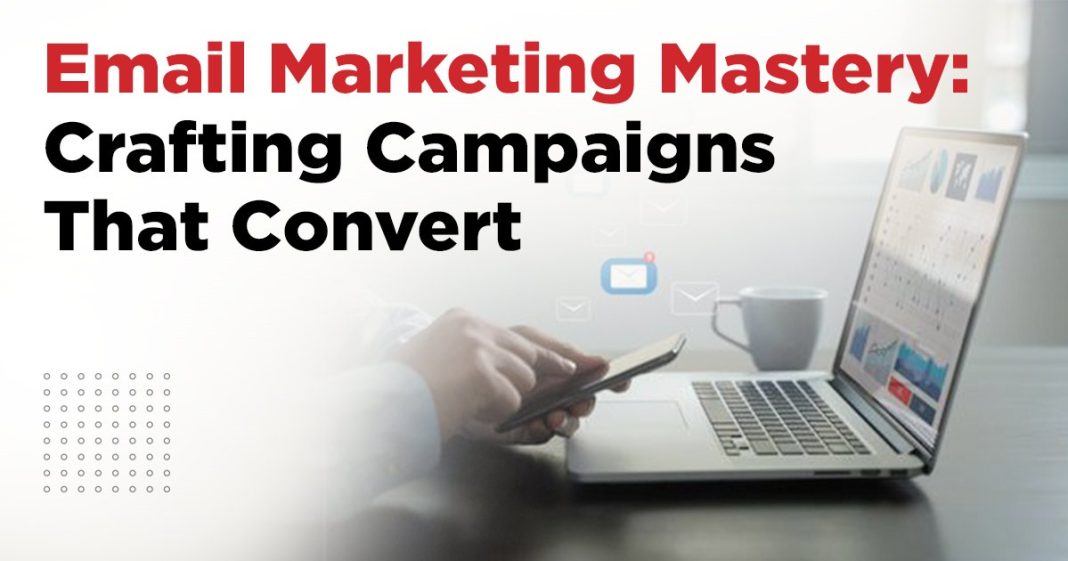Email Marketing is a very powerful technique of Digital Marketing that offers you the ability to increase brand awareness, and interest among the audience. This strategy can help you reach and connect with your target audience directly in a more personalized way.
The best part about email marketing is that it is very affordable and easy to use. There are many email marketing tools also available in the market to help you automate your entire process for growth and success.
Let’s dive deep into the world of Email Marketing.
What is Email Marketing?
Email marketing is an online marketing technique where the marketer communicates with potential customers through e-mail. Professionally used emails are the key not just to making the customer-purchasing process but also to converting the one-time customer to an emotionally driven loyalist called a subscriber. This form of marketing is effective due to its ability to reach directly to the targeted audience and be quantifiable.
Importance of Email Marketing
Among the different strategies that can be used digitally, email marketing is perhaps the most affordable and yet quite effective. They provide a relatively high ROI that tends to surpass the results of many other advertising media. By using email marketing techniques, companies are able to get closer to their clientele, advertise goods or services, and consequently boost sales.


Your Email List is the Secret Weapon of Success
The foundation of accomplishing great things through email marketing is having a solid list of subscribers.
1. Email List Building Hacks for More Subscribers
It is important to understand that a good and healthy email list forms the basis of any email marketing campaign. Here are several strategies to grow your list:
- Opt-in Forms: Have interactive sign-up forms on your website, your blog, and all of the social media accounts that your business uses.
- Lead Magnets: Give something of considerable worth, such as eBooks, white papers, or special discount coupons in exchange for email addresses.
- Webinars and Events: Capture the subjects’ email addresses where they register for webinars or events at the firm.
- Partnerships: I would love to think of other neighboring businesses that have similar products and services and offer to exchange lists for cross-selling.
2. Segmentation: The Right Audience reconnaissance
It is the process of sorting or categorizing your email list into different sub-groups according to certain parameters like age, gender, previous purchases, or level of activity. This makes it easier to segment the e-mails and send targeted and therefore more effective e-mails, which will help to increase open as well as conversion rates.
Read Our Article: How Much Important is the Authentication Process in Email Marketing
Crafting Compelling Email Content
1. Subject Lines That Ensures A Lot Of Attention
The subject line is the shortest way to get that initial acceptance and to decide whether the recipient will actually open your e-mail. Effective subject lines are:
- Concise and Clear: Make it brief as much as possible.
- Intriguing: Make people interested but do not lie to them.
- Relevant: This one is a variation of the previous tip whereby one must ensure that the subject is presented in a way that will meet or appeal to the needs and desires of the audience.
2. Designing Engaging Email Templates
Employing a good-looking template in the email increases the readability levels and hence people will be more engaged. Key design elements include:
- Mobile Responsiveness: What your email should look like on all devices?
- Visuals: Incorporate pictures, videos, and graphics to avoid having a large chunk of write-up as well as to grab the attention of the audience.
- Branding: Make sure to include your brands’ colors, types of fonts you regularly use as well as your logo.
3. Writing Persuasive Copy
The main part of your email template should capture the audience’s attention, be informative, and persuasive, and encourage action. Tips for writing persuasive copy include: Tips for writing persuasive copy include:
- Personalization: Personalize it with the recipient’s name and keep the content close to their interests.
- Clear Call-to-Action (CTA): Do not complicate what you want your readers to do as the next step to reading your work.
- Value Proposition: Emphasise the added value that is to be provided through the offer.
Automation in Email Marketing and Personalization


1. This email flow concept can be achieved by using the power of automation of the emails.
Auto mail means sending messages to your subscribers depending on the chosen time without much human input. Common types of automated emails include: Common types of automated emails include:
- Welcome Series: Build a new client base of subscribers.
- Abandoned Cart Emails: Inform the customers of products that they have left in their basket.
- Re-engagement Campaigns: Re-subscription; conversion of inactive subscribers.
2. Personalizing Your Email Campaigns
It is a continuation of the use of the names of the recipients that the company intends to reach. It is the process of selecting and implementing messages that correspond to the wants and usage patterns of the target audience. Techniques for personalization include:
- Dynamic Content: From the data of subscribers, show various content blocks.
- Behavioral Triggers: Remarkets based on specified activities like the visits made to a particular website or the products that a client has previously bought.
- Personalized Recommendations: Provide information or recommendations for products or contents that may be of interest in the future.
Analyzing and Optimizing Performance
1. Key Metrics to Track
To measure the success of your email campaigns, track the following metrics: To measure the success of your email campaigns, track the following metrics:
- Open Rate: How many of the people to whom you sent the email actually opened it up?
- Click-Through Rate (CTR): The number of people who read your email from the target group and those who clicked on the links you directed them to.
- Conversion Rate: The ratio of the targets or groups to which a specific action must be performed, usually a purchase in this case.
- Bounce Rate: The rate of bounce or the number of emails that did not reach the target inboxes.
- Unsubscribe Rate: The amount of people that can be potentially lost from your email listing through opting out from receiving your emails.
2. A/B Testing for Better Results
A/B testing can be practiced by splitting a list and sending two different versions of an email to a limited number of the targets. Subject lines, images, CTAs, and the times of sending should be tested to have better campaigns in the future.
3. Improving Deliverability Rates
Deliverability on the other hand pertains to the capability of the mail being sent to your subscribers’ mailbox. To improve deliverability:
- Clean Your List: Trim down the frequency of subscribers restricting only to lively ones.
- Authenticate Your Domain: Please authenticate your emails using the commonly used methods that include SPF, DKIM, and DMARC.
- Monitor Sender Reputation: Keep Sender Score high To achieve this you should avoid spam complaints and should follow the best practices in e-mail marketing.
Compliance and Best Practices
1. Understanding Email Marketing Laws
Follow regulations that govern email marketing these include the CAN-SPAM Act of America, GDPR of the EU, and CASL of Canada. Key requirements include:
- Consent: Do not send the emails unless the recipient has agreed to it.
- Opt-Out: The option should be also easy to find so that the recipient could easily unsubscribe if it wanted to do so.
- Transparency: Place your physical address and contact details.
2. Caring for your e-List
This means that email lists will help to open rates, click-through, and deliverability will be higher in a healthy email list. Tips for maintaining your list include: Tips for maintaining your list include:
- Regularly Clean Your List: Excluding the unnecessary alternatives or the undue addresses that are no more in use or a fake address.
- Engage with Subscribers: Mail frequently but deliver relevant and improved substance for the subscribers.
- Monitor List Quality: There are some spots vulnerable to spam traps and other problems among them it is possible to call such tools.
Case Studies: Top Tips to Achieve Your Goals for Email Marketing
Considering the successful email campaigns that have been run in the past can be useful as it brings new ideas. Here are a few examples: Here are a few examples:
- Company A: Open rates were enhanced to a figure of 40% by persons alizing the subject line and getting down to the contents.
- Company B: Increased their sales by 25% with the help of abandoned carts with timely sending of email series.
- Company C: Successfully reintroduced the service to a 20 percent loss of subscribers with a fun reactivation campaign that presented them with special coupons.
Frequently Asked Questions (FAQs)
Q1. How many emails should I send to the subscribers?
How frequent your emails should be depends on the subscribers/customers and the kind of content you wish to deliver. Ideally, one to two emails a week is considered appropriate. However, the level of engagement should be checked often and the communication done according to the reactions of the subscribers.
Q2. When is the right time to make an email blaster?
Thus, it is critical to understand that people are diverse and it remains irrational to stick to a certain time for sending email messages. In general, posting during the mid-week specifically Tuesdays, Wednesdays, and Thursdays, or around mid-morning 10 am, or early afternoon 2 pm results in higher engagement. The best time to publish is dependent on your target audience; thus, through A/B testing, you can be in a position to come up with the best time.
Q3. What should I do to lower my unsubscribe rate?
To reduce your unsubscribe rate: To reduce your unsubscribe rate:
- Send Relevant Content: Do nothing to erode the trust that your subscribers give you by opening their emails to you.
- Segment Your List: Take the targeting of different segments of viewers into consideration.
- Avoid Over-Sending: Do not spam your subscribers’ inbox especially if you are sending many emails at once.
Q4. How can we determine a good open rate for email advertisements sent by companies in this industry?
Specific open rates depend on the industry, but around 15-25% is considered to be good. It is useful to compare your open rates with others to get a proper perspective on your campaigns.
Q5. What steps can I take to follow up on an email campaign that did not go so well?
If an email campaign performs poorly:
- Analyze Metrics: Determine the cause of the problem by checking the quantitative data.
- Gather Feedback: At this stage, it will be relevant to request feedback from your subscribers to find out what they prefer.
- Test and Optimize: Always employ A/B testing to try and make the next campaign better than the previous one.
Q6. Is it possible to purchase email lists to expand the subscriber list?
Believe it or not, people, DO NOT BUY email lists. It can result in poor subscribers’ interest, frequently received complaints and eventual unsubscribes, and violation of the law. Concentrate your efforts on the steady accumulation of the list through ethical means.
Q7. How critical is mobile optimization in the context of email promotions?
It is important to conduct mobile optimization as a large number of emails are opened and read on portable devices. Some of the design tips all your emails should meet include, easy-to-read text, and click-through buttons for the mobile experience.



